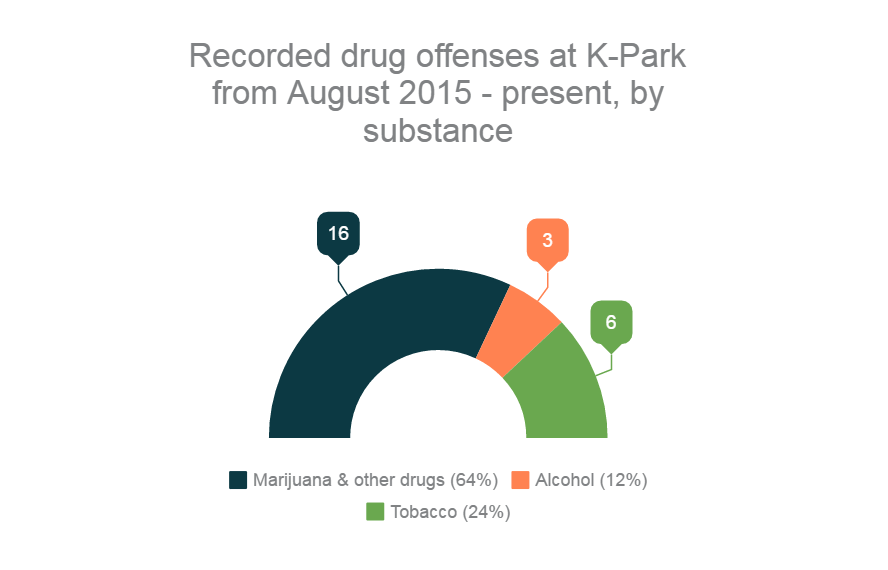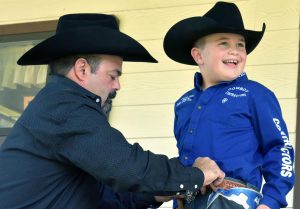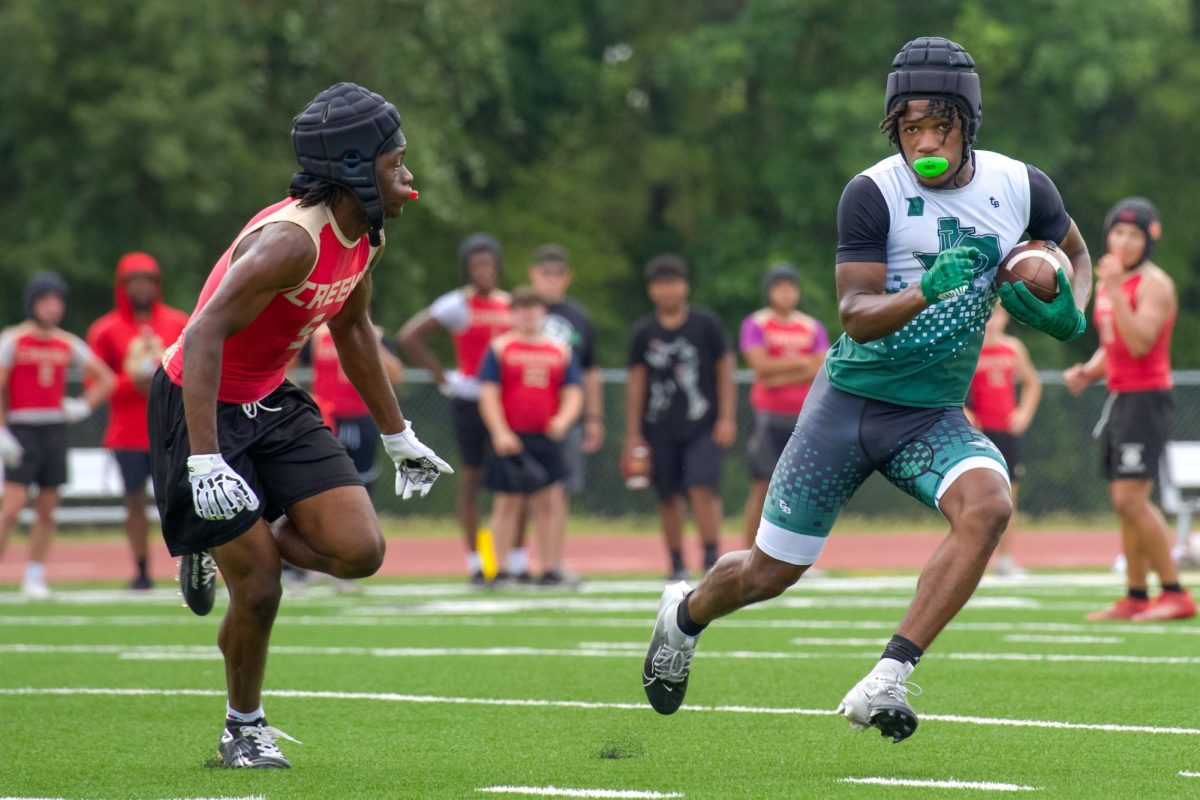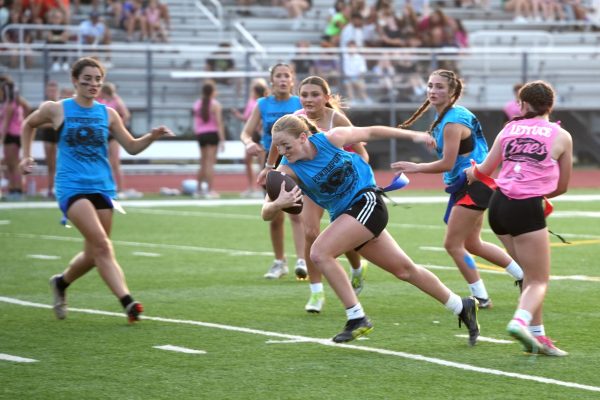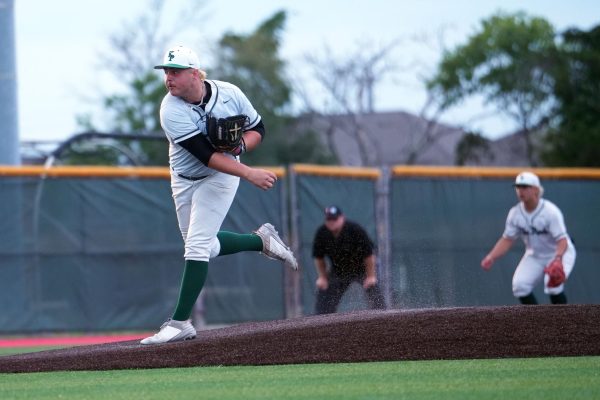K-Park’s drug problem – big or small?
March 10, 2017
On social media sites and in whispers in the back of class, drugs seem to be on everyone’s lips at K-Park.
Students share photos of their friends smoking at parties and laugh about how drunk one of their friends got. They discuss when they’re going to meet up to smoke. They spread rumors about who’s selling and who’s gotten caught. They share posts on social media about drugs while the teacher is passing out papers.
It is unclear how much of what students say about drug use at K-Park is hype and how much is rumor, but the student’s perception of the school’s drug problem contrasts greatly with what the school’s staff and administration believe.
Many students said they estimate that the majority of K-Park students use drugs, but school officials offered a much lower number.
At-risk counselor Gina Sanchez estimated that only about 20 percent of K-Park students are currently doing drugs. Associate principal Brian Johnson, on the other hand, said that he is unable to say, out of the students who are breaking school rules related to drugs, how many the school is catching.
Both Sanchez and Johnson said it is very hard to give an estimate on this topic from their perspective, because students doing drugs want to hide it from authorities, and that they have no survey data from K-Park to look at to give them an idea. However, neither believe the problem to be widespread.
“I’m not naive, I know that kids make bad choices, but I don’t think it’s out of hand or anything,” Johnson said. “I think we do a really good job at K-Park of talking to students about what our expectations are… I don’t think a lot of kids do it while they’re at school.”
Discipline records from K-Park show that only about one percent of students are disciplined for drug-related offenses at school.
Records from K-Park show that in the 2015-2016 school year, 12 students received a combination of in-school suspension, out of school suspension, and/or were sent to long term for possessing, using, selling or being under the influence of marijuana or another controlled substance. Three received the same for possessing, selling, using or being under the influence of alcohol, and five for buying, using or accepting a cigarette or tobacco product.
So far this year, four students have been disciplined for violations related to marijuana or another drug, and one for tobacco or cigarettes.
These numbers support the administration’s estimates on student drug use, but they do not account for the number of students using drugs outside of school.
School nurse Mary Fischer, however, puts her estimate of how many students are doing drugs higher than the estimates that other K-Park staff gave. In her research of drug use in high school as part of her training as a school nurse, she has found data that lines up more with the estimates K-Park students have. Fischer said that most studies she has looked at have found that 75 to 90 percent of seniors nationwide have done drugs at least once in the past year.
The National Institute of Drug Abuse reported that in 2016, roughly 35 percent of seniors nationwide used marijuana within the past year, and 61 percent used alcohol.
“You just look at your senior class and you think ‘has 75 percent of them done drugs or alcohol?’ and it’s alarming,” Fischer said
Fischer said that the large majority of students she has seen for drug use have been using marijuana. She has also seen alcohol and stimulant use.
However, Fischer only sees students in her office who are under the influence at school, not those who are simply carrying or selling drugs. If a student is suspected of being under the influence at school, their first stop is the nurse. Fischer’s job is to assess if the student needs medical attention.
“Safety is the number one thing for us as far as the clinic goes,” Fischer said. “We’re not the administrators, we’re not the ones that lay down what the rules are.”
If necessary, Fischer can bypass all school rules and get the student the medical care that they need.
Drug use in high school is not a new problem, but the types of drugs used students are using are.
The National Institute on Drug Abuse found that high schooler’s use of marijuana has been steadily increasing since the mid-to-late 2000’s, while the use of other drugs has dropped.
“It’s not that 15 years ago we didn’t have stress and anxiety,” Fischer said. “It’s just a different way that people are dealing with it [now], and it’s not productive.”
In his 13-year career, Johnson said the majority of students he’s seen who get in trouble for drugs are using either alcohol or marijuana, and the percentage of each is about 50/50. There is not a stereotype of a kid who gets in trouble for drugs, Johnson said.
“There are 1,800 teenagers here,” Johnson said “Everyone makes bad decisions occasionally, so you have kids from all walks of life unfortunately who have issues with drugs and alcohol.”
K-Park does take preventative measures against drug use on campus. Drug dogs come to K-Park during the school year to check lockers and cars for drugs. K-Park teachers are also trained to identify red flags that indicate a student may be using drugs.
K-Park also works to help students who have drug problems recover.
On campus, Sanchez oversees various methods to help at-risk students develop coping mechanisms, such as assigning them a teacher mentor, having them talk with counselors, participate in support groups or helping them get into outside treatment programs
About 60 students are a part of their support team program for various reasons, not just drugs, Sanchez said.
Sanchez estimated that about 90 percent of students in K-Park’s at-risk programs are able to get back on track and back on top of their grades.
Johnson encourages anyone who is worried about someone who they know has a drug problem, whether it be themselves, or someone else, to have that person talk to someone they trust. He said the person can be a teacher, a counselor, or anyone the student is close to.
“I would never want a student to be thinking to themselves ‘I could have done something to stop that and I didn’t,’” Johnson said. “I would never want a kid to have to carry that weight. That’s a heavy burden to bear.”


